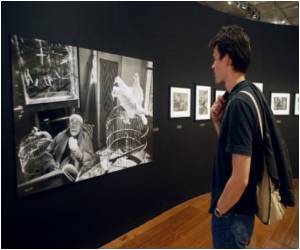Simple line drawings - that have been with us since prehistoric times - can capture the essence of a beach or a mountain for viewers just as well as a photograph would, a new study has shown.

"The representations in our brain for categorizing these scenes seem to be a bit more abstract than some may have thought - we don't need features such as texture and color to tell a beach from a street scene," he said.
For the study, 10 participants viewed color photographs and line drawings of six categories of scenes-beaches, city streets, forests, highways, mountains and offices-while their brains were scanned using functional magnetic resonance imaging (fMRI).
The fMRI images showed the researchers what was going on in several areas of the participants' brains when they viewed the photos and line drawings. The most significant results occurred in the parahippocomal place area (PPA), an area of the brain that scientists know plays an important role in the encoding and recognition of scenes (rather than faces or objects).
Using the data from when participants viewed the color photos, the researchers trained a software-based decoder to tell what type of scene the participants viewed-a beach, mountain, etc., -- based on the patterns of brain activity in the PPA revealed in the fMRI.
The decoder was far from perfect, but it did better than chance at predicting what scene a person was viewing in a particular fMRI image.
Advertisement
"That suggests the brain uses the same information to decode which scene it is viewing when it is presented with line drawings or photos," he said.
Advertisement
Source-ANI










